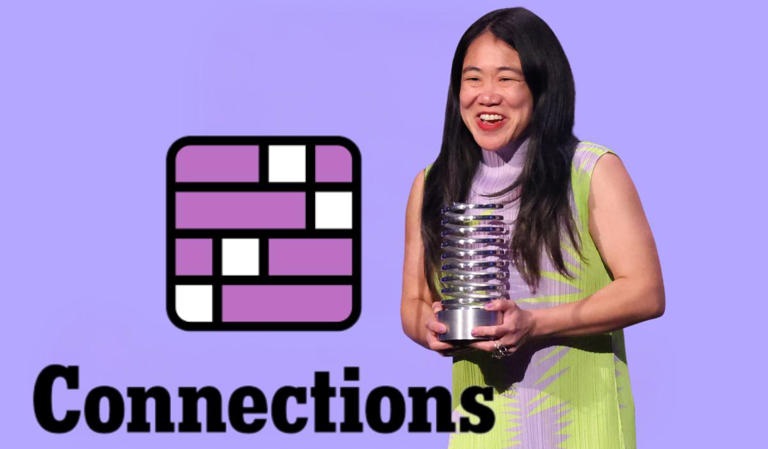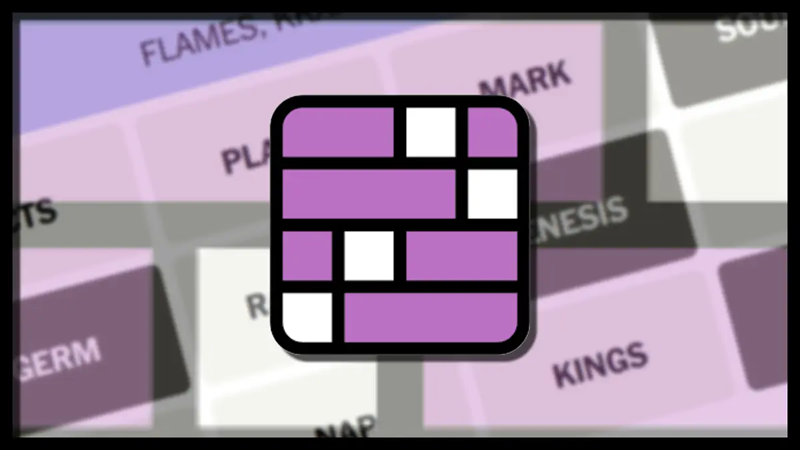The New York Times ‘Connections’ Puzzle for Monday, July 29, presents a significant challenge for even the most experienced puzzle-solvers. The interweaving threads of logic and wordplay demand a keen grasp of language and mental agility. The puzzle’s theme, cleverly hidden within the answers, often adds an extra layer of complexity to the solving process.
For instance, the use of homonyms, synonyms, or words with multiple meanings can often lead to a surprising and satisfying resolution. When it comes to solving the puzzle, an effective approach is to identify these thematic clues first. They often serve as anchors, providing a solid starting point from which to unravel the rest of the puzzle. Other hints may be found in the puzzle’s structure itself, such as recurring patterns or motifs, which can also offer valuable insight into the puzzle’s solution. If you’re stuck, don’t be afraid to take a break and come back to the puzzle with a fresh perspective. Sometimes, what initially seems like an insurmountable challenge can easily be resolved with a clear mind and renewed focus.
Additionally, don’t be hesitant to collaborate with others. The NYT ‘Connections’ Puzzle can be a fun and engaging activity to enjoy with friends or family, and often, a fresh set of eyes can bring a new perspective to the table. The most important thing to keep in mind is to have fun. The primary purpose of these puzzles is to provide entertainment and stimulate your brain, so don’t let frustration overshadow the enjoyment of the challenge. Remember, every puzzle is solvable, and with patience, perseverance, and perhaps a little help from your friends, you’ll be sure to find the solution.

How to Master the NYT ‘Connections’ Game
Mastering the New York Times ‘Connections’ Game requires a blend of strategy, patience, and a keen grasp of language. First and foremost, familiarize yourself with the game’s rules and objectives. In this puzzle, you must link two words together by changing one letter at a time, with each resulting word needing to be a valid English word. For example, linking ‘cold’ to ‘warm’ might look like this: cold, cord, word, ward, warm.
To succeed, you’ll need to think logically and strategically. Plan your moves ahead of time, visualizing your path from your starting word to your end word. It’s often beneficial to work backwards from your end word as well as forwards from your starting word.
Word knowledge is an essential component of the game. The more words you know, the more options you’ll have for your moves. Broaden your vocabulary by reading widely and frequently. Additionally, use tools like dictionaries or thesaurus apps to help you discover new words and their meanings.
Patience is also crucial. The game can be challenging, and it’s easy to get stuck. If you find yourself struggling, take a break and come back to the puzzle later. Fresh eyes can often see solutions that were previously overlooked.
One final tip: practice, practice, practice. The more you play, the better you’ll get. Not only will you expand your vocabulary and improve your problem-solving skills, but you’ll also start to see common patterns and strategies that you can use to your advantage.
In conclusion, mastering the New York Times ‘Connections’ Game is a rewarding challenge that requires logical thinking, a rich vocabulary, patience, and plenty of practice. With time and effort, you’ll soon find yourself conquering even the trickiest puzzles with ease.
Clues and Answers for Today’s NYT Mini Crossword – Tuesday, July 30
On Tuesday, July 30, the New York Times Mini Crossword presented a series of thought-provoking clues that tested the mental agility of its audience. The crossword, known for its stimulating and challenging questions, did not disappoint. The intriguing puzzle was a perfect blend of culture, history, science, and general knowledge.
The clue that sparked the most discussion was a cryptic reference to a famous American actress, which, for those familiar with classic cinema, was revealed to be Katharine Hepburn. Other clues called upon the solver’s knowledge of geography, with the capital of Norway, Oslo, being the answer to one. In the realm of science, one clue required the solver to recall that the chemical symbol for gold is Au, while another invoked the Fibonacci sequence, a series of numbers in which each number is the sum of the two preceding ones.
Sports enthusiasts had their moment in the spotlight when the clue about a famed Swedish tennis player from the 70s and 80s cropped up, the answer being Bjorn Borg. Literature lovers were not left out either; one clue referenced the iconic green light in F. Scott Fitzgerald’s “The Great Gatsby.”
The crossword also embraced contemporary pop culture, with clues about current music hits and emerging trends in fashion. A question about a popular streaming platform led to the answer “Netflix,” while a clue about a recent social media trend pointed to the answer “TikTok.”
The beauty of crosswords lies in their ability to span a wide range of topics and challenge solvers to think outside the box. The New York Times Mini Crossword on July 30 was no exception. It offered a comprehensive test of knowledge, encouraging solvers to delve into different areas of expertise and rewarding them with the satisfaction of cracking the code. The diversity and complexity of the clues made this edition a delightful mental workout, leaving solvers eagerly anticipating the next day’s challenge.

‘Strands’ Hints and Spangram for Today’s NYT Puzzle – Tuesday, July 30
Today’s New York Times puzzle for Tuesday, July 30, brings to mind the word ‘Strands’ as a key hint. This intriguing clue directs our minds towards several possible interpretations, each with a potential to unlock the intricate design of the puzzle. Perhaps ‘Strands’ refers to threads of a tale, hinting at a narrative woven through the answers. Alternatively, it may evoke images of DNA strands, pointing to a science-themed set of answers. Other possibilities include strands of hair, strands of pearls, or even strands of thought, each providing a different angle through which to approach the puzzle.
The Spangram for today’s NYT puzzle is another fascinating aspect. This term, a portmanteau of ‘span’ and ‘anagram’, refers to a puzzle where every letter of the alphabet is used at least once in the grid’s solution. This creates an additional layer of complexity, as not only must you find the correct answers to the clues, but also ensure every letter is represented in your solution. The Spangram aspect could be particularly relevant if ‘Strands’ is interpreted as strands of DNA, with each letter representing a different genetic component.
Playing with these hints, a tapestry of clues and answers begins to form, challenging not only your vocabulary and general knowledge, but also your ability to think laterally and see connections where they might not be immediately obvious. And of course, the satisfaction of completing the puzzle, of seeing the final picture emerge from the jumble of clues and letters, is a reward in itself, a testament to your mental agility and perseverance.
So, grab your pen or pencil, or prepare to tap away on your screen, and get ready to unravel the ‘Strands’ of today’s New York Times puzzle. Whether you’re a seasoned solver or a newbie, this puzzle promises to entertain, educate, and elevate your crossword skills. Happy solving!
Discover Today’s Connections Hints
Today’s connections hints are an integral part of our technologically advanced world. These are the subtle cues and indicators that help us navigate the vast web of digital interactions, relationships, and interconnections. They can be as simple as suggested friends on social media or recommended products on e-commerce websites, or as complex as predictive analytics in business intelligence tools. These hints are essentially algorithms working behind the scenes, analyzing our online behavior, preferences, and habits, and consequently, making suggestions. They are instrumental in enhancing user experience by making our digital interactions more personalized, streamlined, and efficient.
However, this level of personalization and efficiency comes with its own set of challenges. One of the most prominent among these is the concern around privacy. As these algorithms gather data about our online activities, questions about data security and user privacy inevitably arise. It is important for users to be aware of the kind of data being collected, how it is used, and how it is stored.
Another challenge stems from the fact that these hints can sometimes lead to echo chambers. When our online experiences are tailored to our preferences, we risk being exposed only to views and opinions that align with ours. This can limit our perspective and inhibit critical thinking.
Nonetheless, the benefits of today’s connection hints cannot be overstated. They hold immense potential in various fields, including e-commerce, social networking, and even health care, where they can help in predicting disease outbreaks or personalizing patient care. It is essential for us to understand how to leverage these hints effectively while being mindful of the associated challenges. With technological advancements, the power of connection hints is only expected to grow, further transforming the way we interact with the digital world.

Find Out Today’s Connections Answers
Today’s Connections Answers are resources that hold the key to obtaining valuable information for a range of topics. Understanding these answers can offer insight into various fields, from educational subjects like math, science, and literature to more elaborate themes in history, philosophy, and sociology. They are available on several platforms, including educational websites, information portals, and even social media platforms.
These resources are designed to aid students, researchers, and curious minds in their quest for knowledge, providing comprehensive, accurate, and up-to-date information. While the answers are generally provided by experts or enthusiasts in the field, it is always recommended to cross-verify the information from multiple sources to ensure its accuracy and reliability. Today’s Connections Answers can also serve as a valuable tool for educators in their pedagogical approach, offering a well-structured, easy-to-navigate resource for teaching and learning.
They help connect the dots between different pieces of information, fostering a better understanding of the subject matter. Whether you’re a student looking to enhance your academic performance or a researcher seeking in-depth knowledge, Today’s Connections Answers can be a valuable asset. Remember to utilize these resources responsibly, and in conjunction with a variety of other information sources, to ensure a well-rounded comprehension of the topic at hand.
